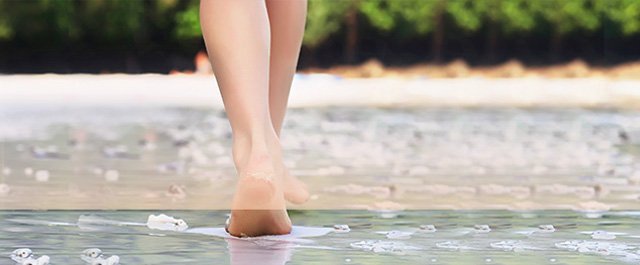Hammer Toe
What is a hammer toe?
A hammer toe is a spectrum of lesser toe deformities that can occur and are not uncommon. A toe can be bent right at the tip which is called a mallet toe. It can be raised at the toe crease area, otherwise known as the MTP joint, with associated misshapening called a claw toe and then in between lies the hammer toe or elevated hammer toe where the toe joint is bent in the middle in an upside-down V position. It can occur in isolation or associated with other toes, mainly 2nd, 3rd and 4th. At least up to 3 million people in the UK will have hammer toes and they can often run in families as a result of naturally long 2nd and 3rd toes. Most commonly they are associated with bunion or hallux valgus.
How do you get a hammer toe?
Hammer toes are usually as a result of a muscle imbalance, usually in combination with shoes that do not fit properly and other factors such as neurological problems, joint inflammation or tendon injury. Muscles across joints tend to work in synchrony to straighten and bend the toes. If they become imbalanced and the toe is held in a position long enough the muscles further tighten, as does the joint structures themselves, and therefore can no longer stretch out. If the shoes do not fit well they can also push the toes into a flexed or a bent position. Often as they become stiff or fixed they start to rub against the shoes, which then leads to formation of corns or calluses which are thickening nodules on the skin that further aggravate the condition.
What are the symptoms of a hammer toe?
Hammer toes can cause pain, predominantly on rubbing against shoes. The corns and calluses that form from the rubbing can become very painful. You can also get an underlying bursitis or inflammation, a sac of fluid forming, which would cause sudden severe pain and occasionally these can become infected.
How is a hammer toe treated?
Hammer toes can be subdivided into two basic types: the ‘flexible’ which is all correctible by manipulation and ‘fixed’ where the joints are no longer flexible and the deformity is static. Non-surgical treatment options can reduce symptoms. These include shoes with roomy toe boxes and soft uppers. This can be used in combination with various strapping cushions or non-medicated corn pads. You can also be prescribed some toe exercises to do at home to stretch and strengthen and rebalance the muscles and joints. Hammer toes can be corrected surgically, which is usually required due to the progressive nature of the problem, and this is usually done as an outpatient or day care basis under regional block. The type of procedure will depend on the nature and extent of the deformity. Following the surgery there is often some stiffness and swelling with redness and the toe will be a different size, but done appropriately should lay in line with the remaining toes and not to look too long or too short. You are able to walk following the surgery but to be limited in the first instance whilst the bone and tissues heal and during this period may need to keep the foot elevated as much as possible. The surgery comprises of flexible correction in terms of just releasing the tightness in the soft tissues and tendons to rebalance the joints and moving up to stiffening the joints straight, although you are still able to grip the floor and maintain posture and balance.
Are there any new procedures or treatments you would like to highlight?
Traditionally hammer toe surgery required the use of a wire protruding from the tip of the toe for about 5-10 mm, which was at risk of getting bumped and becoming infected and definitely was a source of pain and inflammation. This was usually kept in for up to six weeks which made wearing shoes difficult and walking difficult as well. There have now been improvements in the way the surgery is performed. The soft tissue corrections which require release of tight contracted tissues and tendons can be done percutaneously or with minimally invasive surgery. Some bony correction can also be achieved through minimally invasive osteotomies. The full correction with straightening of a joint can now be undertaken using a sideways cut along the knuckle joint, thus hiding the scar in the crease. The damaged and stiff joint end can be removed and a small internal plastic pin can be placed to connect the two bones together, thus straightening the toe. The operation will take around 20 minutes. The advantages are that the scar is well tolerated and hidden in the skin crease, you can wear shoes as soon as the wound has healed in 12 days, the internal pin will maintain the new position of the toe whilst the bone and tissues continue to heal, thus allowing you to return to various aspects of your life gradually much quicker than the traditional techniques.

 Menu
Menu



